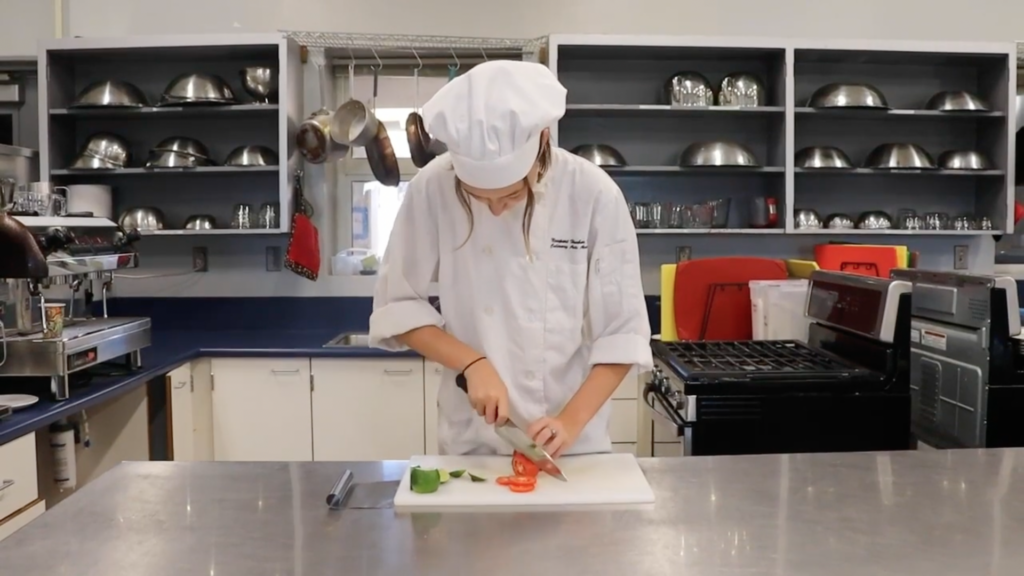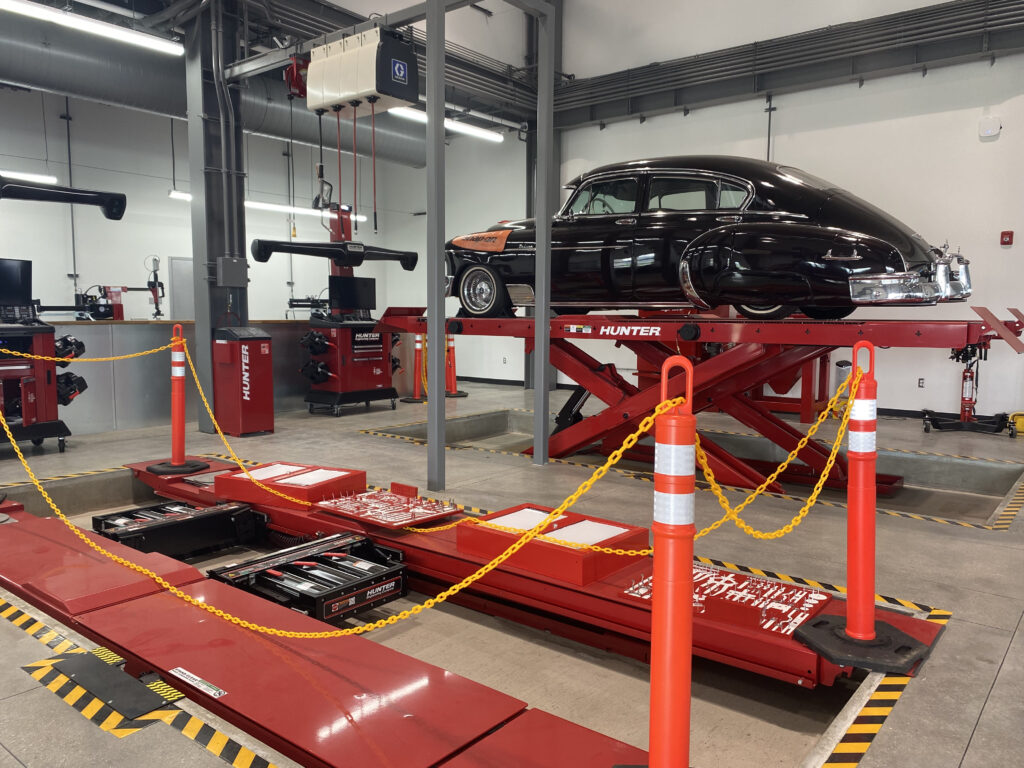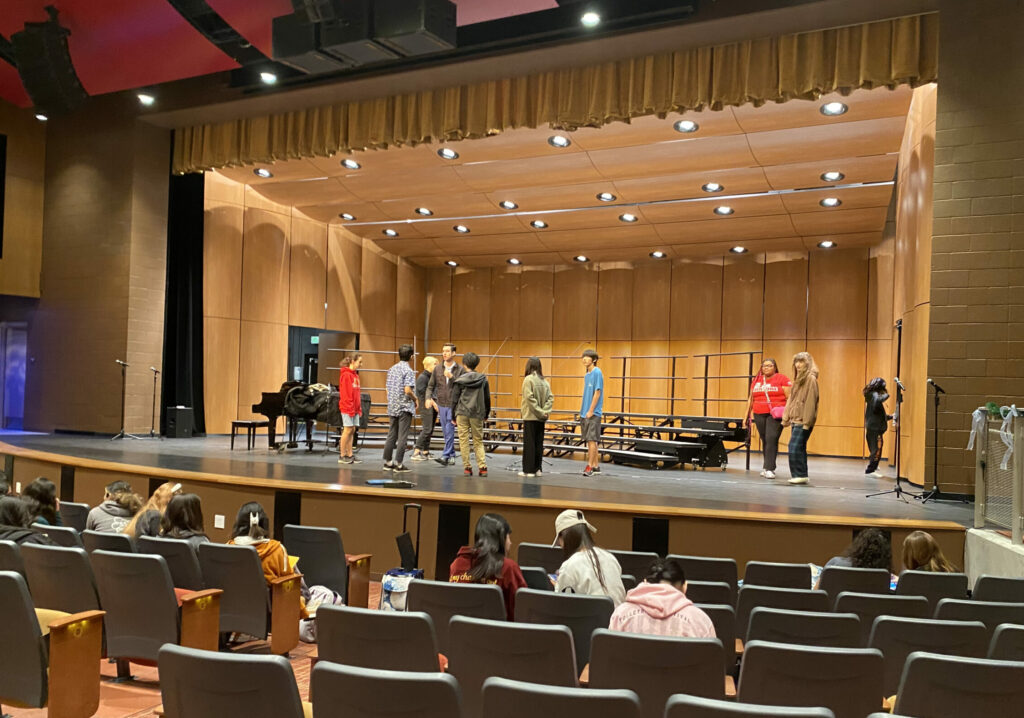
Media design, artificial intelligence, culinary arts and automotive technology are just a few of the advanced areas of study making up todays’ career pathways programs.
Throughout the month of February, Career and Technical Education initiatives spanning K-12 to higher education will be recognized for offering skills-based curriculum and workforce opportunities for all students. CTE Month was established by the national Association for Career and Technical Education to celebrate these programs’ accomplishments in helping students succeed in and out of the classroom.
“This CTE Month, let’s tip our hats to the educators and students who are the heartbeat of our community,” said Kathy Boyd, OCDE’s director of career education. “They’re not just learning — they’re doing, turning today’s dreams into tomorrow’s skilled careers. It’s about real skills for real jobs, and that’s something worth celebrating.”
The purpose of regional occupational centers and programs is to equip students with necessary workforce skills and knowledge while encouraging the pursuit of advanced training in higher educational institutions. They have been a major component of Orange County’s workforce preparation systems for over 50 years, according to the California Department of Education.
The OCDE Newsroom previously spoke with Boyd to provide a closer look at the learning opportunities offered by local high schools, colleges, universities, businesses and ROPs alongside the department’s own OC Pathways program.
Without further ado, here are five things families need to know about Career and Technical Education programs.
Career technical education exploration is open to middle and high school students.
The California Board of Education approved a statewide plan in 2005 and set model curriculum standards for seventh- through 12th-graders in order to provide guidance for CTE programs and outline learning goals for career pathways within 15 industry sectors.
Starting in middle school, students get their first chance to select elective courses that are aligned to their interests, whether they want to learn more about agriculture and natural resources or business and finance. Boyd said these exploratory labs allow middle schoolers to connect their interests to their abilities before they choose a career pathway.
Once they reach high school, students can take introductory, concentrator and capstone courses in any career area they choose. High school students also have the option to apply for internships and apprenticeships in nontraditional career sectors offered by local businesses and industry partners affiliated with OC Pathways or their local ROPs.
Academic plans are made to guide students from high school to college.
CTE offers multiyear programs for students to build on their college and career readiness while meeting core academic requirements. The 15 career sectors offered across the state are defined by the California Department of Education and further explained in OC Pathways’ Integrated Program of Study Pathway Grids.
Approximately 94 percent of students who enroll in a CTE concentration will graduate from high school, according to data from the Carl D. Perkins Career and Technical Education Act.

Schools and ROPs provide individualized student plans that middle and high schoolers can follow after choosing a pathway that meets their interests. Students can complete high school coursework required for admission to public universities — known as A-G requirements — and earn graduation credits while gaining a competitive edge towards employment.
In the Santa Ana Unified School District, CTE students interested in the automotive industry can start learning about careers in automation and robotics as early as seventh grade and go on to complete professional transportation internships in high school, earning them credits toward college courses.
Among these graduates, 75 percent will then go on to pursue degrees in postsecondary education, according to a nationwide assessment from the U.S. Department of Education.
Students can earn early college credits through career technical education.
Starting in middle school, students can start earning college credits by enrolling in both articulated and dual enrollment courses.
Articulated courses offered through school CTE programs are marked equivalent to college courses on students’ college transcripts. As a result, students can potentially earn college credit leading toward degree and certification attainment at a local community college.
If a high school campus does not offer a class or a program that matches a student’s interests, they have the option to attend dual-enrollment classes at partnering community colleges, including the Fullerton, Cypress, Coastline, Golden West, Orange Coast, Saddleback, Santa Ana, Santiago Canyon and Irvine Valley colleges. Classes available on college campuses are offered free or at a low cost for high schoolers enrolled in CTE.
Accessing early college credit through CTE courses can allow students to get a head start on their degrees, as most career courses embed industry certifications.
Regional occupational programs make career technical education classes accessible to all students.
California is home to 74 regional occupational programs throughout the state. Through partnerships with local businesses and industries, the ROPs can offer courses that support students in earning their industry certificates and transferable college credits.
North Orange County ROP, Coastline ROP, the College and Career Advantage, and the Career Technical Education Partnership (CTEp) at OCDE work together to assist districts in following the state-issued Elements of High Quality CTE standards. Each ensures that teachers are fully trained and that career courses remain up to date on best practices, says Boyd.
North Orange County ROP supports the Anaheim and Fullerton Joint union high school districts as well as the Placentia-Yorba Linda, Brea Olinda and Los Alamitos unified school districts. Coastline ROP supports the Huntington Beach Union High School District and the Irvine, Saddleback Valley, Tustin and Newport-Mesa unified school districts. College and Career Advantage supports the Capistrano and Laguna Beach unified school districts. Lastly, CTEp supports the Garden Grove, Orange and Santa Ana unified school districts.
Career technical education programs have a variety of options for career exploration.

Approximately 58 career pathways are available to students who want to explore their passions and career pursuits in career and technical education.
In addition to career classes in areas like biotechnology, there are also options for students interested in more creative pursuits.
Districtwide CTE programs like the Theater Technology pathway in the Irvine Unified School District teaches students about set design, sound engineering and theater management in preparation for each school’s stage productions through courses that meet statewide theater curriculum standards.
For more information about the CTE options on school campuses throughout Orange County, students and parents can get connected with their school counselors, district career counseling coordinators and ROPs. Learn more at OC Pathways.com.
